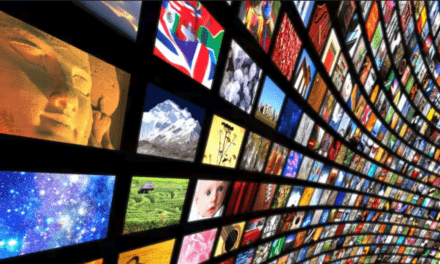EuropeNow, the online journal of the Council for European Studies invites contributions for its September 2021 issue on European culture and the moving image in all its varied forms.
This issue of EuropeNow seeks contributions that explore how images imagine European community as they move on all our screens from cinema, television, streaming, to gaming, vr, and beyond; but we also seek discussions of how European cultural policy produces European images. From the earliest days of film as a side show attraction to the present multiplatform mode of reception, European cinema in its broadest sense has been a technology for imagining communities in various forms. Filmmakers from the regional to the national and European level know that cinema projected on the big screen or streaming on our small screens provides a powerful means to imagine communities. Simultaneous viewing, whether experienced silently in theaters, with a live tweeting commentary, or across consoles can create affective bonds variously to the local or to the transnational. Since the newsreel days of Wilhelm the “Media Kaiser,” politicians and policy makers in Europe have long recognized that moving images can instigate significant public sphere debates, bring peoples together or incite culture war divisions. Even as multilanguage version films sought to overcome the linguistic division of sound film, nationalist politicians sought to bind European film to the nation-state. Europe is of course home to some of the grand cinema nations and European filmmakers have produced countless masterpieces of art cinema as well as a multitude of popular culture delights now streaming into the home. They have done so in various conditions, industrial and independent, free market and fascist. Historically national policy sought to regulate the flow of images at times leading to state control over the film industry. Currently the EU’s Creative Europe Programme seeks to overcome the national borders and synergize a European audiovisual sector, while some populist politicians seek to surround national audiences with firewalls. European film and media policy in its history can just as much allow for broadcast without borders as it can establish import quotas that restrict the flow of information. Television series (across streaming, cable, and broadcast platforms) have now become a prominent mode of transmission of images of Europe. And to meet European and global demand for series new private and public production entities – sometimes in cooperation – have emerged.
The dynamics of image production and exhibition in Europe are very much affected today by COVID. While intimate genres of storytelling gain narrative currency, demands for new screen productions augment during isolation. On location production, however, halts and only big budget projects can afford European studios due to extra costs of safety measures. Social distancing, on the one hand, increases home viewing practices and reinvigorates open-air cinemas, and on the other, leads to lockdowns of movie theaters. But we can recognize in this moment a long history of transformation. From its earliest days of the moving image has proven dynamically able to respond to changing economies and societies; now in this moment we see it move into new publics, production and exhibition practices, policies and changed communities.
This special issue of EuropeNow invites contributions exploring various forms of moving image expression over the history of European cinema. Contributions may engage topics not limited to:
- The creation of European film and television projects
- The European project in film and television
- European themes of migration, climate change, populism, pandemic, gentrification/urban development, gender, BLM, and the generation of a European problematic on screen
- Localization and Europeanization as inflected dynamics
- Inside/outside to Europe, European border regimes and media representations
- The moving image archive as living cultural legacy in European memory politics
- The impact of the pandemic
- Language and subtitle policies and practices
- Technology shifts and European storytelling
- Animation, VR, digitalization, streaming
- Co-productions
- Film and Series festivals
- Local Netflix and HBO Europe productions (documentaries and series) as well as series remade for different national markets
- Creative Europe and the inflection of national film board and council funding.
- The development of European film and television industries
- Mechanisms of European distribution and exhibition
- Audiences, fans, user review sites (e.g. Allociné.fr), participatory prizes (e.g. the LUX prize)
Contributions may take the form of essays, but also interviews, translations, reports, etc. They should be no longer than 3,000 words and aim to engage a generalist audience.
Proposals for contributions should be no more than 300 words. Please send the editors your proposal by February 15th. If your proposal is selected, the final submission of your short article (2,500-3,000 words) is July 15th 2021.
Issue Editors
Dr. Randall Halle, University of Pittsburgh, rhalle@pitt.edu
Dr. Ipek A. Çelik Rappas, Koç University, ipekcelik@ku.edu.tr
Dr. Michael Gott, University of Cincinnati, michael.gott@uc.edu
EuropeNow (www.europenowjournal.org) is an online monthly journal that features research, criticism, and journalism on Europe. It has a monthly readership of 100,000 worldwide.





